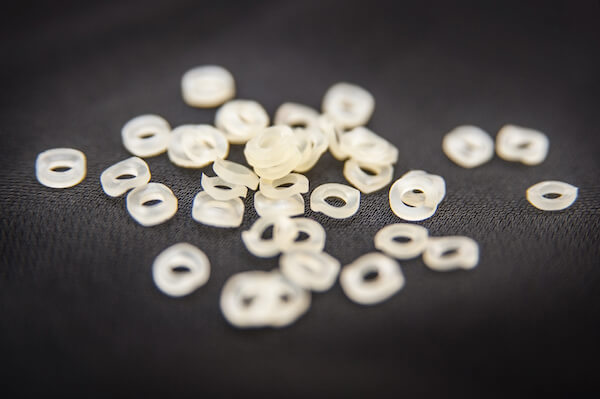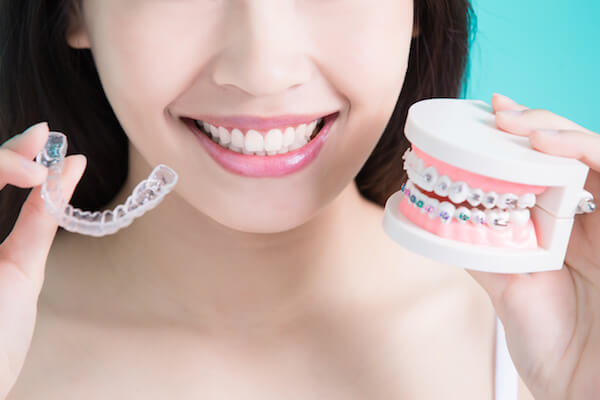Your New Best Friend, Invisalign

Just the thought of getting orthodontic treatment is enough to make people cringe. Not only can the treatment be uncomfortable and painful, but it restricts what you can or can’t do for months if not years. If the combination of pain, discomfort, and multiple restrictions have caused you to miss out on correcting your smile, we would like to introduce you to Invisalign.
Invisalign is quickly becoming one of the most popular orthodontic treatment options. It is increasing in popularity because while it corrects the alignment and placement of your teeth like traditional braces, it doesn’t have the same restrictions.
Unsure if Invisalign might be right for you? Take a look at some of the reasons people gave us when we asked why they love Invisalign.
No Complicated Teeth Cleaning Procedures
Invisalign’s ability to be quickly removed makes it extremely easy for you to clean your teeth. When you want to brush and floss, you just pop the aligners out and brush and floss as you did before Invisalign.
People love the fact that you no longer have to go through a complex tooth cleaning ritual. There is no need for specialized tools or spending precious time threading floss through the wires and brackets. You can just pop out the trays and clean your teeth.
Reduced Pain and Discomfort
Orthodontic treatment is often thought to be painful and uncomfortable. The pain and discomfort come from the stiff metallic wires and bulky brackets rubbing the lips and cheeks. People worried about pain and discomfort during orthodontic treatment will love Invisalign because it doesn’t happen with this type of orthodontic treatment.
Invisalign uses clear plastic aligner trays to guide your teeth into proper placement. Using this type of material reduces the possibility that you will experience any pain, discomfort, or irritation during treatment in your lips and cheeks
Fewer Office Visits Means More Free Time
There is a huge time commitment involved with getting traditional braces. In order for the treatment to work, you will have to plan on visiting the orthodontist every 6 to 8 weeks for adjustments. That is a lot of office visits and that doesn’t even include any emergency appointments you might need if your brackets fall off or a wire pops out. Luckily, this type of time commitment isn’t needed with Invisalign.
Invisalign allows people to have more free time because they don’t have to keep visiting the orthodontist for checkups or adjustments. There will still be a need for some appointments to check your progress, but you won’t be visiting the office that often.
Who is a Good Candidate for Invisalign?
While it would be great if every person could use Invisalign to correct their smile, it isn’t always the best treatment option for some people.
Good candidates for this type of orthodontic treatment have the following qualities:
- Dedicated to treatment –An individual has to be committed to putting them back in once removed.
- Ability to follow directions – There will be multiple instructions on when to switch out the alignment trays, how often you should brush and floss, and other things. It is important that you be able to follow directions or your treatment could be delayed.
- Teeth that aren’t still growing – Invisalign tends to work better for older teens and adults who are no longer still growing.
- Minor to moderate orthodontic cases – Invisalign can treat minor to moderate orthodontic problems, but isn’t the best option for severe orthodontic problems such as extremely overbites or underbites.
Interested in seeing if you are a good candidate for Invisalign? Schedule a consultation with Sr. Natalia Valderrama at our Valderrama Orthodontics Suntree/Viera office. We will be able to determine whether you are a good candidate for Invisalign treatment. Call our office at 321-425-5050 today to schedule your Invisalign consultation.







Let's Get Social